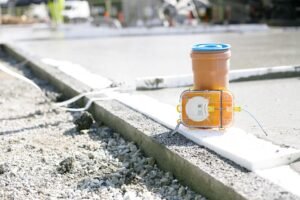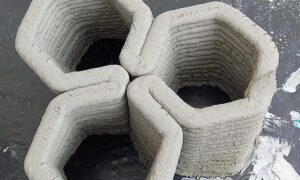In a groundbreaking advancement, researchers at Princeton University have engineered a new type of concrete inspired by human bone structure, achieving an remarkable 5.6 times greater strength compared to conventional cement-based materials.This innovative approach not only enhances the durability of concrete but also holds the potential to revolutionize the construction industry and reduce its environmental impact.
The research team, led by Reza Moini, an assistant professor of civil and environmental engineering, and Shashank Gupta, a Ph.D. candidate,drew inspiration from the architecture of human cortical bone,notably the dense outer shell of femurs. Cortical bone consists of elliptical tubular components called osteons, which are embedded in an organic matrix. This unique structure allows bones to deflect cracks around the osteons, preventing abrupt failure and increasing overall resistance to crack propagation.
Mimicking this natural design, the Princeton engineers incorporated cylindrical and elliptical tubes within the cement paste. These tubes interact with propagating cracks, enhancing the material’s toughness without sacrificing its strength. The result is a concrete that is not only stronger but also more resistant to sudden, catastrophic failure – a common challenge in engineering brittle construction materials.
One of the most remarkable aspects of this new concrete is its ability to withstand progressive damage. Instead of breaking all at once,the material exhibits a stepwise toughening mechanism. As cracks form, they become trapped by the tubular structures, delaying their progression and causing energy to dissipate at each stage of the process.This controlled crack extension prevents sudden failure, making the material significantly tougher than its conventional counterparts.
The innovative approach taken by the Princeton team differs from conventional methods of strengthening concrete, which frequently enough rely on adding fibers or plastics to the mix. Rather, their design focuses on manipulating the material’s internal structure through precise geometric arrangements.By carefully controlling the tube geometry,size,shape,and orientation,the researchers promoted crack-tube interactions that enhance the concrete’s properties without compromising its other characteristics.
This breakthrough has far-reaching implications for the construction industry and beyond.Buildings constructed with this bone-inspired concrete could be more resilient to earthquakes, extreme weather events, and other structural stresses.Bridges and roads built using this material might require less frequent repairs and replacements, leading to reduced maintenance costs and improved safety for users. The increased durability could also translate to longer-lasting infrastructure, potentially reducing the need for frequent rebuilding and the associated environmental impacts.
The environmental benefits of this new concrete extend beyond its durability. Cement production is a meaningful contributor to global greenhouse gas emissions, accounting for approximately 3% of the total. By creating a stronger, more damage-resistant material, the need for cement in construction could potentially be reduced, leading to a decrease in carbon emissions associated with concrete production.
In addition to its practical applications, the research team’s work has also advanced our understanding of material science. They introduced a novel method to quantify the degree of disorder in architected materials using principles from statistical mechanics. This approach provides a powerful tool for describing and designing materials with tailored degrees of disorder, opening up new possibilities for creating even more advanced and mechanically favorable structures.
The development process for this bone-inspired concrete involved innovative fabrication techniques. The researchers used a combination of 3D printing and casting methods to create the intricate internal structure of the material. They first 3D printed a tubular template mold using polyvinyl alcohol (PVA), which was then used to create a negative mold. This negative mold was afterward filled with cement paste to produce the final product. This hybrid manufacturing approach allows for precise control over the internal architecture of the concrete, enabling the creation of complex designs that would be tough or unachievable to achieve with traditional concrete casting methods.
Looking ahead, the Princeton team sees numerous avenues for further research and development. They plan to explore how their design principles could be applied to other brittle materials to improve damage resistance across a wide range of applications. The researchers are also investigating the potential of using advanced fabrication methods such as additive manufacturing to scale up the production of these tubular designs for use in larger civil infrastructure components.
The implications of this research extend beyond just creating stronger buildings. In an era where climate change is leading to more frequent and severe natural disasters, the development of more resilient construction materials is crucial. This bone-inspired concrete could play a vital role in creating structures that can better withstand earthquakes, hurricanes, and other extreme events, potentially saving lives and reducing economic losses from natural disasters.
Moreover, the principles behind this innovative concrete design could inspire advancements in other fields. From aerospace engineering to medical implants, the concept of mimicking biological structures to enhance material properties has wide-ranging applications. This research serves as a prime example of how biomimicry – the emulation of nature’s time-tested patterns and strategies – can lead to significant technological breakthroughs.
As we look to the future of construction and materials science, it’s clear that innovations like this bone-inspired concrete will play a crucial role. By learning from and adapting the intricate designs found in nature, we can create materials that are not only stronger and more durable but also more sustainable and environmentally friendly. This breakthrough from Princeton University represents not just an improvement in concrete technology, but a step towards a future where our built surroundings is in greater harmony with the natural world, combining the best of human ingenuity with the time-tested designs of nature.










